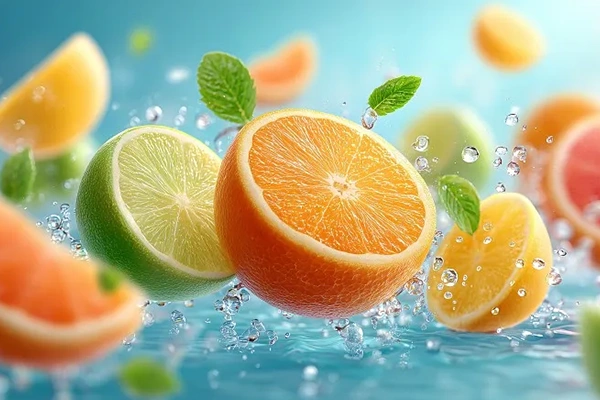Beverage production involves more than just mixing ingredients—it relies on specialized equipment to turn raw materials into safe, great-tasting products.Whether you’re setting up a small juice bar or a large-scale facility, understanding these tools is key. In this guide, we’ll walk through the must-have equipment, including how they fit into a functional Juice Beverage Filling Line.

Water Treatment Equipment: The First Step to Great Taste
Water makes up most beverages, so getting its quality right is critical. Poor water can ruin flavors, clog machines, or even make drinks unsafe. That’s why water treatment systems are the foundation of any production line. Here’s what you need to know:
Filtration Systems
- Multi-media filters: These work like a sieve with layers—think sand, gravel, and coal—catching larger particles on top and smaller ones deeper down.
- Activated carbon filters: Made with porous carbon that soaks up chemicals, odors, and tiny organic bits. They’re similar in design to multi-media filters but excel at improving taste by removing chlorine or off-flavors—perfect for enhancing the natural sweetness of fruit juices.
- Sand stick filters: Compact and easy to use, these are ideal for small operations. They filter out bacteria and organic matter when you don’t need huge volumes of water.
- Microporous filters: Using ultra-fine membranes, they trap particles as small as 0.01μm, including most bacteria.
Reverse Osmosis (RO) Systems
RO systems use a special membrane and pressure to push water through, leaving impurities behind. It’s like a high-tech strainer that removes dissolved salts, minerals, and even viruses. This is a game-changer for drinks where purity is non-negotiable, such as baby juices or clear sodas.
It runs 24/7 without needing harsh chemicals, produces very little waste, and delivers consistent results. The membrane only lets water molecules pass, so you get ultra-pure water every time—up to 95% of the input turns into usable water, which saves money in the long run.
Sterilization Equipment: Keeping Drinks Safe to Drink
No one wants a beverage that spoils quickly or makes them sick. Here’s how different systems work:
Heat-Based Methods
- Pasteurization: Gentle heating for 30 minutes or so.
- High-Temperature Short-Time (HTST): Heats to around 85°C but only for 15 seconds.
- Ultra-High Temperature (UHT): Blasts drinks with heat for just a few seconds. This method lets products like boxed juices last for months without refrigeration—ideal for convenience stores or remote areas.
Equipment for Different Needs
- For unpackaged liquids: Some machines inject steam directly into the drink, while others use plates or tubes to heat it indirectly. This is how most juices get sterilized before bottling.
- For bottled or canned drinks: Atmospheric sterilizers work at 100°C for acidic drinks like lemonade. Pressure sterilizers go above 100°C for low-acid drinks like milk, ensuring no bacteria survive.
- No-heat options: UV light, microwaves, or infrared systems are gaining popularity.
Filling Machines: Putting Drinks into Containers
Once the drink is ready, Juice Beverage Filling Line step in to put it into bottles, cans, or cartons accurately and efficiently. The right machine depends on whether your drink is carbonated, thick, or needs to be filled quickly.
Types of Filling Machines
- Isobaric fillers: These are for carbonated drinks like soda or sparkling juice. They first pressurize the bottle with gas to match the pressure in the filling tank, so the drink doesn’t fizz up and overflow. Once the pressure is equal, the liquid flows in smoothly—no wasted product, no flat drinks.
- Atmospheric fillers: Best for non-carbonated drinks like juice or milk. They use gravity to fill containers at normal pressure, which is simple and reliable. These are workhorses in large Juice beverage Filling line setups, handling thousands of bottles per hour.
- Vacuum fillers: Create a vacuum in the bottle to suck liquid in.
Automation Levels
- Semi-automatic: You load and unload bottles by hand. Good for small batches or testing new products.
- Fully automatic: Connected to conveyors, capping machines, and labelers, they run without much human help.
CIP Cleaning Systems: Keeping Equipment Spotless
Cleaning in Place (CIP) systems are like having a built-in cleaning crew for your machinery. They clean tanks, pipes, and fillers without you having to take anything apart. Here’s how they work:
High-temperature, high-pressure cleaning solutions circulate through the equipment, scrubbing away leftover drink residue. This stops bacteria from growing and keeps the line running smoothly. Most systems are programmed to clean different parts automatically—pipes get a strong blast, while delicate fillers get a gentler rinse.
Why CIP matters? It saves time, uses less water and detergent than manual cleaning, and ensures every nook and cranny gets clean.
Whether you’re making soda, juice, or milk, choosing the right tools for your needs will make your production line efficient and profitable.Have questions about packaging machines or need a custom line? Contact Sokos Machinery for free expert advice and tailored solutions.

